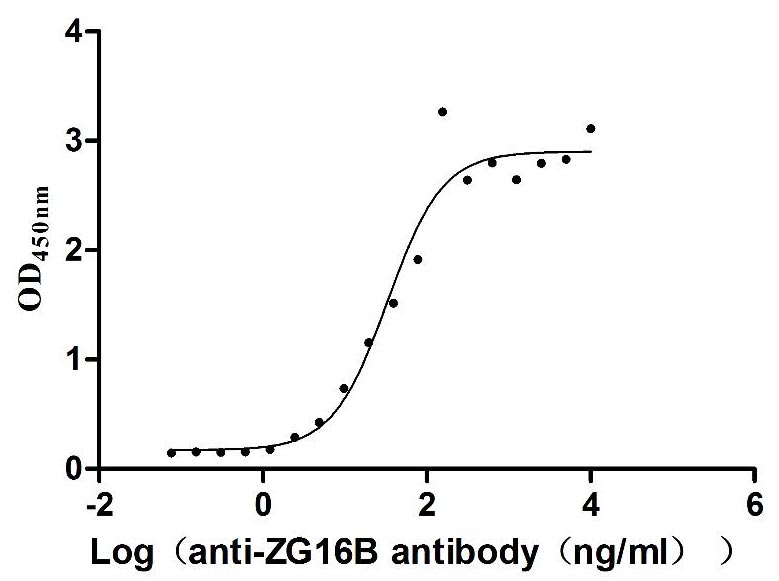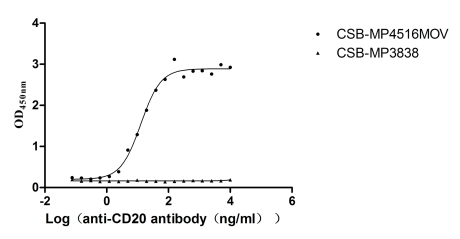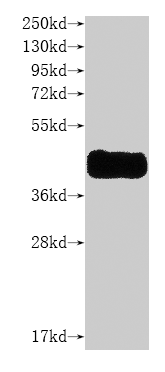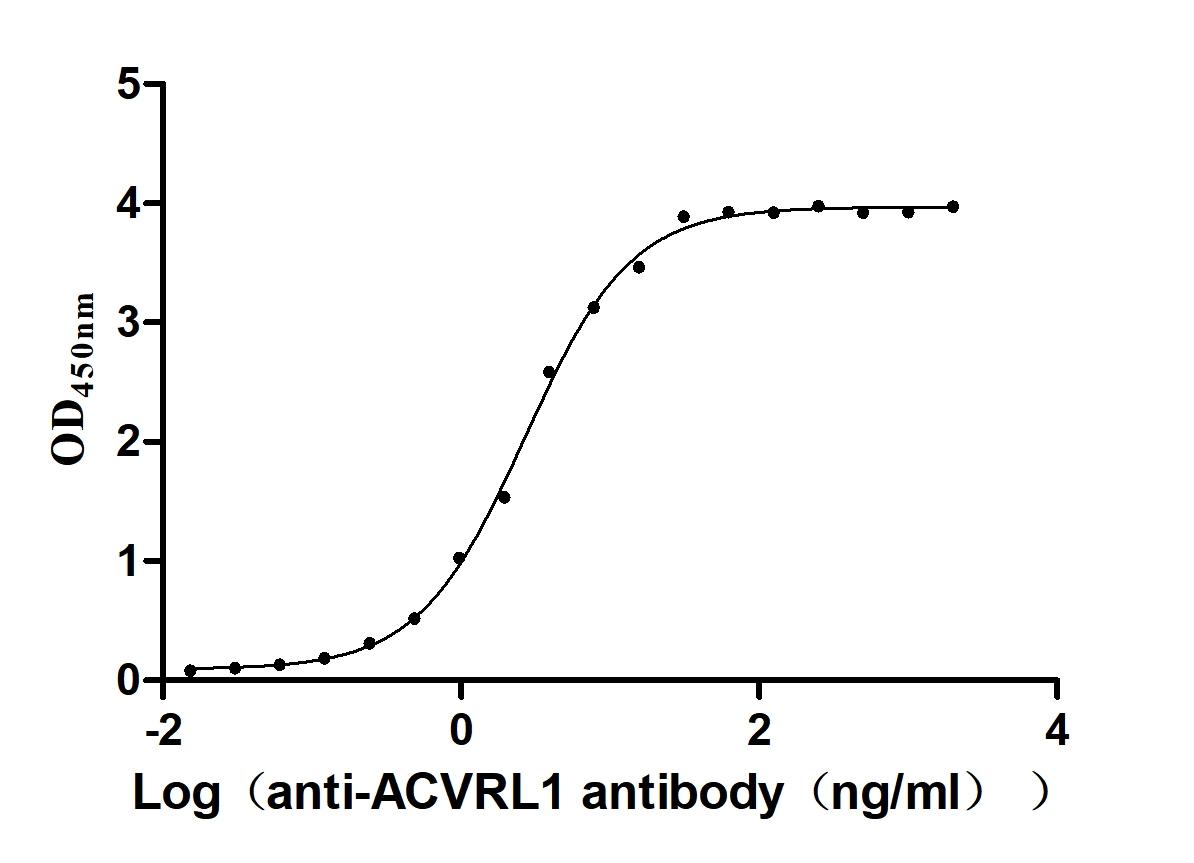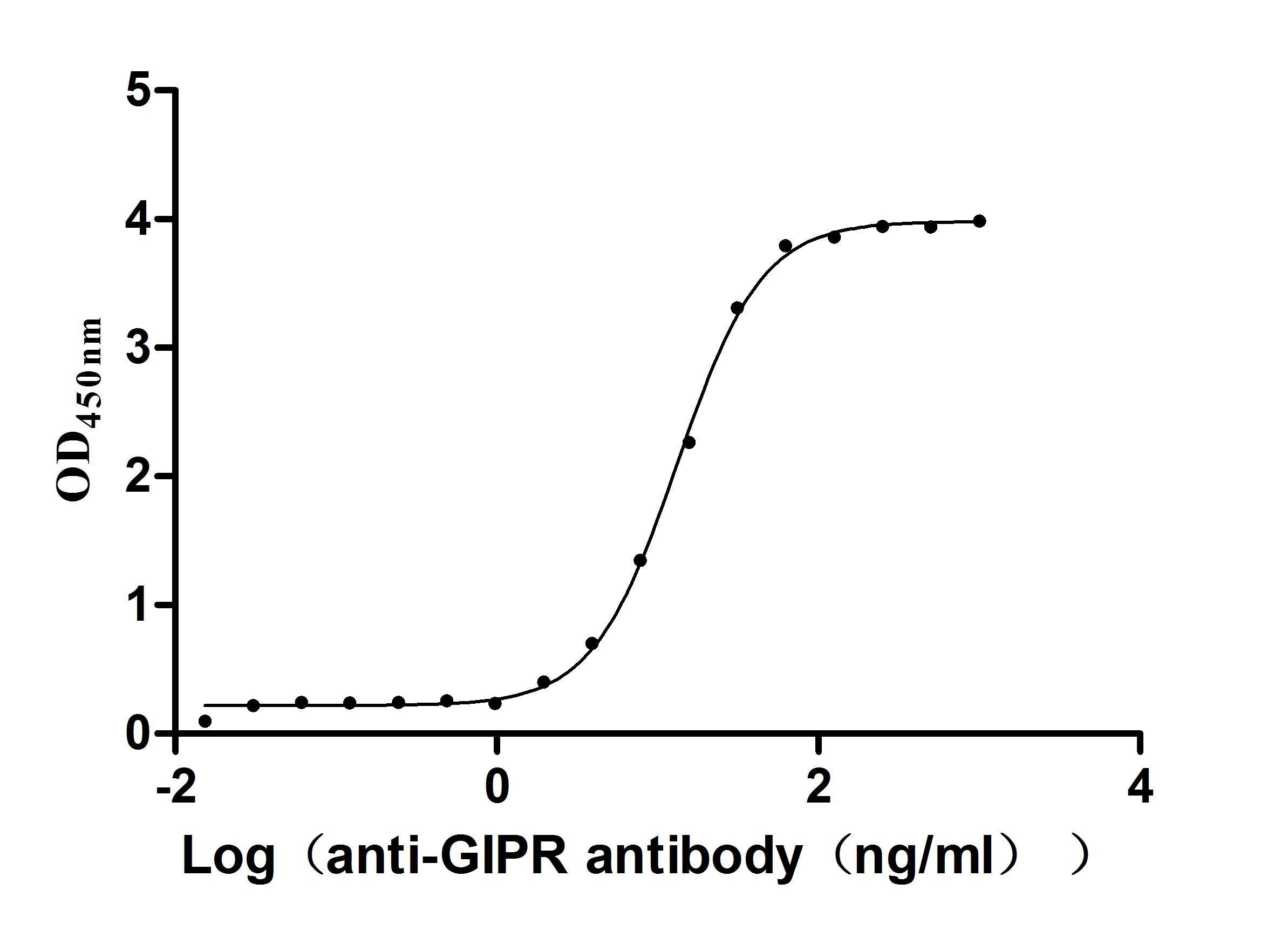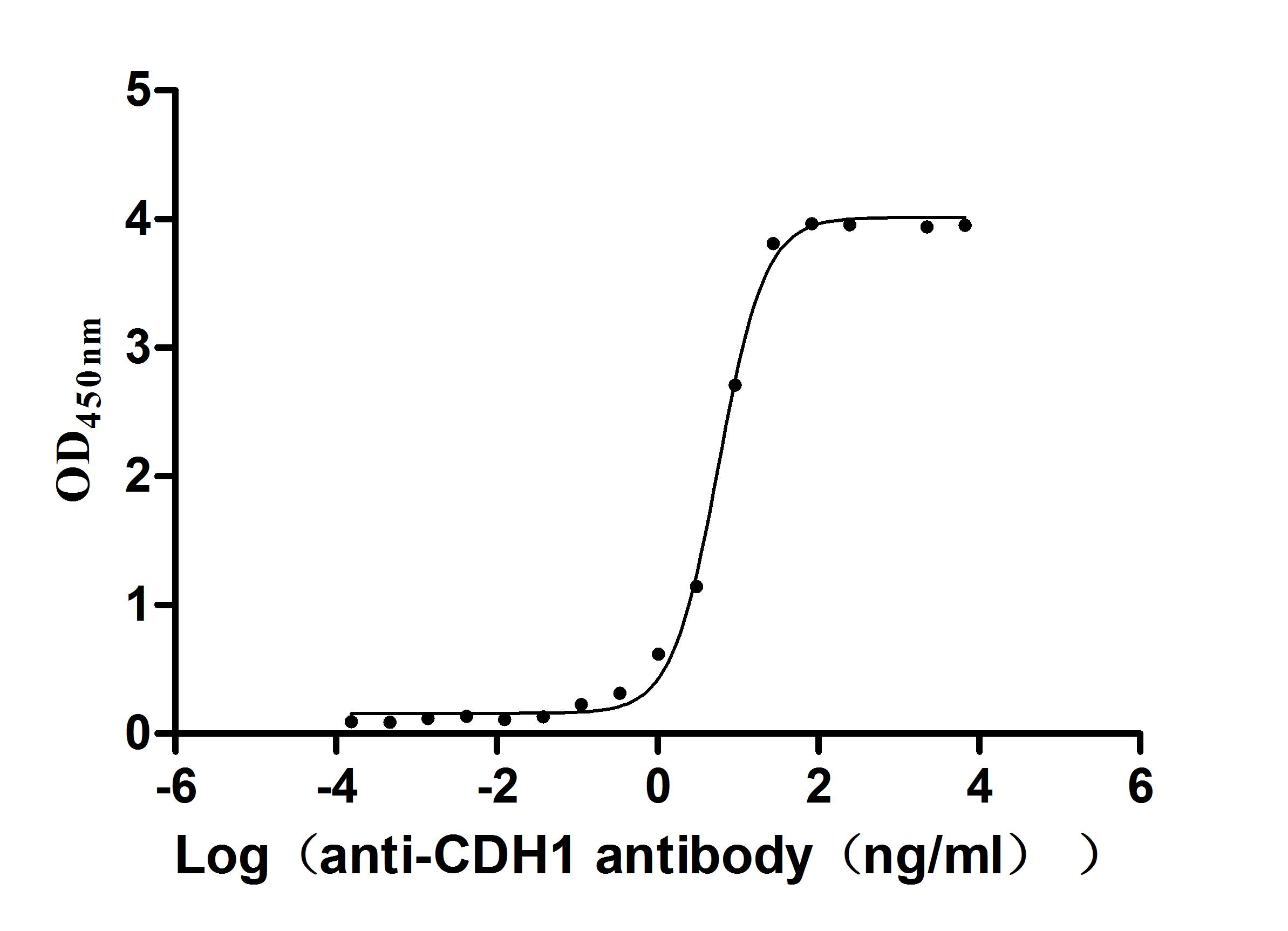Recombinant Mouse Hepatitis A virus cellular receptor 2 homolog (Havcr2), partial
-
中文名稱:小鼠Havcr2重組蛋白
-
貨號:CSB-YP840881MO
-
規格:
-
來源:Yeast
-
其他:
-
中文名稱:小鼠Havcr2重組蛋白
-
貨號:CSB-EP840881MO
-
規格:
-
來源:E.coli
-
其他:
-
中文名稱:小鼠Havcr2重組蛋白
-
貨號:CSB-EP840881MO-B
-
規格:
-
來源:E.coli
-
共軛:Avi-tag Biotinylated
E. coli biotin ligase (BirA) is highly specific in covalently attaching biotin to the 15 amino acid AviTag peptide. This recombinant protein was biotinylated in vivo by AviTag-BirA technology, which method is BriA catalyzes amide linkage between the biotin and the specific lysine of the AviTag.
-
其他:
-
中文名稱:小鼠Havcr2重組蛋白
-
貨號:CSB-BP840881MO
-
規格:
-
來源:Baculovirus
-
其他:
-
中文名稱:小鼠Havcr2重組蛋白
-
貨號:CSB-MP840881MO
-
規格:
-
來源:Mammalian cell
-
其他:
產品詳情
-
純度:>85% (SDS-PAGE)
-
基因名:
-
Uniprot No.:
-
別名:Havcr2; Tim3; Timd3; Hepatitis A virus cellular receptor 2 homolog; HAVcr-2; T-cell immunoglobulin and mucin domain-containing protein 3; TIMD-3; T-cell immunoglobulin mucin receptor 3; TIM-3; T-cell membrane protein 3; CD antigen CD366
-
種屬:Mus musculus (Mouse)
-
蛋白長度:Partial
-
蛋白標簽:Tag?type?will?be?determined?during?the?manufacturing?process.
The tag type will be determined during production process. If you have specified tag type, please tell us and we will develop the specified tag preferentially. -
產品提供形式:Lyophilized powder
Note: We will preferentially ship the format that we have in stock, however, if you have any special requirement for the format, please remark your requirement when placing the order, we will prepare according to your demand. -
復溶:We recommend that this vial be briefly centrifuged prior to opening to bring the contents to the bottom. Please reconstitute protein in deionized sterile water to a concentration of 0.1-1.0 mg/mL.We recommend to add 5-50% of glycerol (final concentration) and aliquot for long-term storage at -20℃/-80℃. Our default final concentration of glycerol is 50%. Customers could use it as reference.
-
儲存條件:Store at -20°C/-80°C upon receipt, aliquoting is necessary for mutiple use. Avoid repeated freeze-thaw cycles.
-
保質期:The shelf life is related to many factors, storage state, buffer ingredients, storage temperature and the stability of the protein itself.
Generally, the shelf life of liquid form is 6 months at -20°C/-80°C. The shelf life of lyophilized form is 12 months at -20°C/-80°C. -
貨期:Delivery time may differ from different purchasing way or location, please kindly consult your local distributors for specific delivery time.Note: All of our proteins are default shipped with normal blue ice packs, if you request to ship with dry ice, please communicate with us in advance and extra fees will be charged.
-
注意事項:Repeated freezing and thawing is not recommended. Store working aliquots at 4°C for up to one week.
-
Datasheet :Please contact us to get it.
相關產品
靶點詳情
-
功能:Cell surface receptor implicated in modulating innate and adaptive immune responses. Generally accepted to have an inhibiting function. Reports on stimulating functions suggest that the activity may be influenced by the cellular context and/or the respective ligand. Regulates macrophage activation. Inhibits T-helper type 1 lymphocyte (Th1)-mediated auto- and alloimmune responses and promotes immunological tolerance. In CD8+ cells attenuates TCR-induced signaling, specifically by blocking NF-kappaB and NFAT promoter activities resulting in the loss of IL-2 secretion. The function may implicate its association with LCK proposed to impair phosphorylation of TCR subunits. In contrast, shown to activate TCR-induced signaling in T-cells probably implicating ZAP70, LCP2, LCK and FYN. Expressed on Treg cells can inhibit Th17 cell responses. Receptor for LGALS9. Binding to LGALS9 is believed to result in suppression of T-cell responses; the resulting apoptosis of antigen-specific cells may implicate HAVCR2 phosphorylation and disruption of its association with BAG6. Binding to LGALS9 is proposed to be involved in innate immune response to intracellular pathogens. Expressed on Th1 cells interacts with LGALS9 expressed on Mycobacterium tuberculosis-infected macrophages to stimulate antibactericidal activity including IL-1 beta secretion and to restrict intracellular bacterial growth. However, the function as receptor for LGALS9 has been challenged. Also reported to enhance CD8+ T-cell responses to an acute infection such as by Listeria monocytogenes. Receptor for phosphatidylserine (PtSer); PtSer-binding is calcium-dependent. May recognize PtSer on apoptotic cells leading to their phagocytosis. Mediates the engulfment of apoptotic cells by dendritic cells. Expressed on T-cells, promotes conjugation but not engulfment of apoptotic cells. Expressed on dendritic cells (DCs) positively regulates innate immune response and in synergy with Toll-like receptors promotes secretion of TNF-alpha. In tumor-imfiltrating DCs suppresses nucleic acid-mediated innate immune repsonse by interaction with HMGB1 and interfering with nucleic acid-sensing and trafficking of nucleid acids to endosomes. Can enhance mast cell production of Th2 cytokines Il-4, IL-6 and IL-13. Expressed on natural killer (NK) cells acts as a coreceptor to enhance IFN-gamma production in response to LGALS9. In contrast, shown to suppress NK cell-mediated cytotoxicity. Negatively regulates NK cell function in LPS-induced endotoxic shock.
-
基因功能參考文獻:
- TIM-3 expression was predominantly localized to myeloid cells in both human and murine tumors PMID: 29316433
- Here, the authors demonstrate that Tim-3 inhibits macrophage phagocytosis of Listeria monocytogenes by inhibiting the nuclear erythroid 2-related factor 2 (Nrf2) signaling pathway and increases bacterial burden. PMID: 28205579
- Studied role of Tim-3 role's in T cell activation using a chronic disease model. Results showed a major function of Tim-3 is to enhance T cell activation during either acute or chronic viral infection, and that Tim-3 is not required for the development of T cell exhaustion. PMID: 29463725
- the data suggested that Tim-3 played a crucial role in the macrophage polarization and brain inflammation following intracerebral hemorrhage PMID: 29107214
- Tim-3 might contribute to successful pregnancy by restraining Th1 bias PMID: 29083087
- synergism in cell death by Caspase-1- and RipK3 resulted in restriction of PD-1 and TIM3 expression on primed CD8(+) T cells, which promoted the survival of activated CD8(+) T cells. PMID: 28686578
- these findings reveal a critical role for Tim-3-Gal-9 signaling-mediated immunoregulation by pNK cells in maternal-fetal immune tolerance and suggest that Tim-3 abundance on pNK cells is a potential biomarker for recurrent miscarriage diagnosis. PMID: 28951537
- Tim-3 and PD-1 pathways play critical roles in regulating CD8(+) T cell function and maintaining normal pregnancy. PMID: 28331165
- CB2R may have a crucial neuroprotective role following HI insult through the modulation of the inflammatory-related HIF-1alpha/TIM-3 signalling pathway in microglia PMID: 28253997
- Our results show that Tim-3 is a critical negative regulator of NLRP3 inflammasome and provides a potential target for intervention of diseases with uncontrolled inflammasome activation. PMID: 28799242
- demonstrated that both IL-10 and TGF-beta upregulated TIM-3 surface expression on dendritic cells via a common signaling pathway that involved sequential activation of c-Src and Bruton's tyrosine kinase PMID: 27439518
- Methylation level of the TIM-3 promoter gradually decreased after each round of T-cell polarization, and this decrease was inversely correlated with TIM-3 expression. PMID: 26890332
- in mice, TIM-3 is not essential for development of HDM-induced acute or chronic allergic airway inflammation, although it appears to be involved in reduced lymphocyte recruitment during HDM-induced chronic allergic airway inflammation. PMID: 27209052
- Authors found that a CD8(+) T-cell population with age-associated exhaustion was distinguishable by its expression of Tim-3. PMID: 26750587
- TIM4 binds TIM3 on the surface of polarized Th1 cells to induce Th1 cell apoptosis, which may contribute to the development of Th2-dominant immune disorders. PMID: 26403707
- decreases immunological rejection during composite tissue allotransplantation PMID: 26561949
- The Gal-9/Tim-3 signal is important for the regulation of decidua NK cells function, which is beneficial for the maintenance of a normal pregnancy. PMID: 25578313
- TIM-3 expression by NK cells and gamma/delta T cells is similar in the peripheral and decidual immune cells from pregnant mice. PMID: 26278059
- Tim-3 acts at a receptor-proximal point to enhance Lyn kinase-dependent signaling pathways that modulate both immediate-phase degranulation and late-phase cytokine production downstream of FcepsilonRI ligation. PMID: 26598760
- Our data indicate that Tim-3 expression on NK cells is regulated by T-bet, and that Tim-3 levels correlate with advanced stages of gastric cancer PMID: 26214042
- TIM-3 plays a role in regulating the uterine natural killer cells and contributes to the maintenance of tolerance at the feto-maternal interface. PMID: 25897749
- TIM-3 is highly expressed in hypoxic brain regions of a mouse cerebral hypoxia-ischaemia (H/I) model. TIM-3 is distinctively upregulated in activated microglia and astrocytes in a HIF-1-dependent manner. PMID: 25790768
- These data identify an IL-27/NFIL3 signalling axis as a key regulator of effector T-cell responses via induction of Tim-3, IL-10 and T-cell dysfunction. PMID: 25614966
- CD4+ T cell-dependent "negative" TIM-3 costimulation is essential for hepatic homeostasis and resistance against IR stress in OLTs PMID: 25676534
- In DSS colitis, Tim-3 inhibited the polarization of pathogenic pro-inflammatory M1 macrophages, while Tim-3 downregulation or blockade resulted in an increased M1 response. Tim-3 effect on macrophage response may be TLR4 dependent. PMID: 26208474
- These data suggest that Tim-3 and IFN-gamma may play a regulatory role in T. gondii-infected pregnant mouse model. PMID: 25270237
- Gal-9, a natural TIM-3 ligand, was produced primarily by and released from ischemia-reperfusion-stressed hepatocytes, both in vivo and in vitro. PMID: 25450716
- HCC conditioned medium or transforming growth factor-beta fostered Tim-3 expression and the alternative activation of macrophages. PMID: 25608525
- Tim-3 induces Th2-biased immunity and macrophage activation during Schistosoma japonicum infection. PMID: 25987707
- The Tim-3 pathway plays an inhibitory role in natural killer cell function. PMID: 25337993
- Specific antigen-presenting cell subsets and the inhibitory receptor Tim-3 may contribute to CD8+ T cell impairment in metapneumovirus pathogenesis. PMID: 25653440
- Tim-3 modulates microglia activity and regulates the interaction of microglia-neural cells. PMID: 25557503
- The TIM-3 pathway ameliorates Theiler's murine encephalomyelitis virus-induced demyelinating disease. PMID: 24486565
- CEACAM1 serves as a heterophilic ligand for TIM-3 that is required for its ability to mediate T-cell inhibition, and this interaction has a crucial role in regulating autoimmunity and anti-tumour immunity PMID: 25363763
- Tim-3 is widely involved in the physiopathology of sepsis by regulating innate and adaptive immune responses. Blockade of the Tim-3 pathway or decreased Tim-3 expression may exacerbate sepsis by increasing immune deviation and immunosuppression in vivo. PMID: 24945079
- Tim-3 signaling pathway acts as a novel negative mediator in LPS-induced endotoxic shock and could be a potential therapeutic target for the treatment of sepsis. PMID: 24561184
- These results demonstrate an essential role for Btk-c-Src signaling in TIM-3-induced DC suppression. PMID: 25172495
- The increased expression of IL-17 and Tim-3 in BALF. PMID: 23904364
- Tim-3/galectin-9 pathway plays a critical role in the homeostasis of hepatic Tregs through the elimination induction in Teffs and the inhibition of IFN-gamma release. PMID: 24333756
- Our findings demonstrate that Tim-3 plays an important role in brain inflammation after intracerebral hemorrhage PMID: 24289479
- Data indicate that the absence of T cell Ig and mucin domain (Tim) 3 (Tim-3) expression impairs CD8 T cell responses to Listeria monocytogenes infection. monocytogenes PMID: 24567532
- results indicate that the Tim-3 pathway is highly involved in the regulation of asthma; targeting Tim-3 by siRNA may hold therapeutic potential in preventing the development of allergic asthma PMID: 23232962
- These data indicate that Tim-3 may be involved in the process of toxoplasmic encephalitis in mice infected with the Toxoplasma gondii Pru strain. PMID: 23595213
- Anti-Tim-3 treatment augments atherosclerosis lesion development, accompanied by an increase in the number of monocytes/macrophages and CD4(+) T cells and by decreased regulatory T cells and regulatory B cells. PMID: 23990206
- These results indicate that the therapeutic efficacy of targeting Tim-3 in experimental autoimmune encephalomyelitis is dependent on the nature of the effector T cells contributing to the disease. PMID: 23562810
- Up-regulated expression of Tim-3 on T cells after burn injury plays an important role in the development and maintenance of burn-induced T cell immune suppression. PMID: 22038354
- In the liver Tim-3+ natural killer {NK)T cells are in an activated state, and Gal-9 directly induces Tim-3+ NKT cell apoptosis and contributes to the depletion of NKT cells in diet-induced steatosis. PMID: 23296703
- T-cell Ig mucin-3 (Tim-3) and its ligand, galectin 9 (Gal-9), were significantly decreased in dextran sodium sulfate-induced colitis PMID: 23117395
- Deletion of the terminal cytoplasmic domain of Tim3 potentiates its ability to downregulate cytotoxic lymphocytes (Tc1) inflammation; this enhanced Tim3 activity is associated with decreased phosphorylation of the T cell receptor-CD3zeta-chain. PMID: 22875804
- TIM-3 circumvents the stimulatory effects of nucleic acids in tumor immunity by interactding with HMGB1 to interfere with the recruitment of nucleic acids into dendritic cell endosomes PMID: 22842346
顯示更多
收起更多
-
亞細胞定位:[Isoform 1]: Membrane; Single-pass type I membrane protein. Cell junction.; [Isoform 2]: Secreted.
-
蛋白家族:Immunoglobulin superfamily, TIM family
-
組織特異性:Expressed in T-helper type 1 lymphocytes. Not expressed by naive T-cells but up-regulated as they differentiate into T-helper-1 cells. Also expressed by differentiated type 1 CD8+ cytotoxic T-cells. Expressed on peritoneal exudate macrophages, monocytes,
-
數據庫鏈接:
Most popular with customers
-
Recombinant Human Pancreatic adenocarcinoma up-regulated factor (ZG16B) (Active)
Express system: Mammalian cell
Species: Homo sapiens (Human)
-
Recombinant Macaca fascicularis Membrane spanning 4-domains A1 (MS4A1)-VLPs (Active)
Express system: Mammalian cell
Species: Macaca fascicularis (Crab-eating macaque) (Cynomolgus monkey)
-
Recombinant Human C-C chemokine receptor type 8 (CCR8)-VLPs (Active)
Express system: Mammalian cell
Species: Homo sapiens (Human)
-
Recombinant Human Serine/threonine-protein kinase receptor R3 (ACVRL1), partial (Active)
Express system: Baculovirus
Species: Homo sapiens (Human)
-
Recombinant Macaca fascicularis Gastric inhibitory polypeptide receptor (GIPR), partial (Active)
Express system: yeast
Species: Macaca fascicularis (Crab-eating macaque) (Cynomolgus monkey)
-
Recombinant Human Cadherin-1(CDH1),partial (Active)
Express system: Mammalian cell
Species: Homo sapiens (Human)
-
Recombinant Human Kidney-associated antigen 1(KAAG1) (Active)
Express system: Baculovirus
Species: Homo sapiens (Human)
-
Recombinant Human Interleukin-1 receptor accessory protein (IL1RAP), partial (Active)
Express system: Mammalian cell
Species: Homo sapiens (Human)


